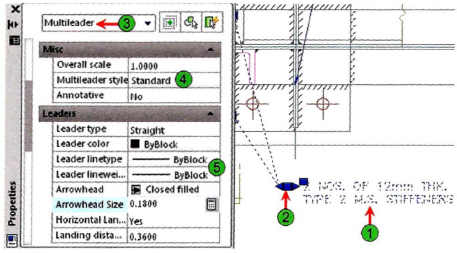Lesson 39 | Using Multileaders
This lesson describes multileaders, multileader styles, and the options available for placing multileaders in the drawing.
You use multileader objects for leader-based annotation. Leaders are important because they enable you to connect features on the geometry to notes, balloon callouts, or other objects. Using multileaders as leader objects provides greater flexibility and control than standard leader objects.
The following illustration shows multileader objects used for balloon callouts.

Objectives
After completing this lesson, you will be able to:
- Describe multileaders.
- Describe multileader styles.
- Create and edit multileaders.
About Multileaders
Using multileaders, you can create associative leader-based annotation objects that behave intelligently as a single object. Similar to associative dimensions, multileaders are treated as single objects with specific object properties.
In the addition to this associativity, multileaders have additional options for placing, editing, and managing leader-based annotation objects.
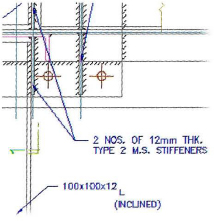
Definition of a Multileader
A leader is an annotation that includes an arrow, a leader line, a landing, and some form of text or other object. A multileader is a style-based associative leader object that combines several different common elements such as lines and text into a single associative object. When you select a multileader object, grips are displayed at several points on the object. You can edit any of these points; you select the grip and move it to a different location.
If you double-click a multileader, the Properties palette is displayed showing properties specific to the multileader object. The initial property settings originate from the current multileader style, but can be overridden just like properties on other objects.
| Selected multileader object | |
| Multileader grips | |
| Multileader object type identified in the | |
| Properties palette Properties specific to multileader objects | |
| Properties specific to multileader objects |
Example of Multileaders
In the following illustration, two multileader objects are used to identify six different areas on the drawing. Because the objects are style based and associative, if you need to make changes, you can do so easily.

If standard leader objects were used in the drawing above, a change, such as print scale, would require that you redraw all of the leaders and change the text height for each text note.
About Multileader Styles
Multileader objects are style-based, which means that the properties for the individual elements originate from the current multileader style.
In the following illustration, a typical multileader object is shown. While there are several properties associated with a multileader, they can be organized into three main categories.

| The Leader Format properties enable you to specify arrowhead type and size, as well as the leader type, straight or spline. | |
| The Leader Structure properties enable you to specify constraints on the leader line such as segment angles, landing settings, and the overall leader scale or annotative property. | |
| The Content properties enable you to specify the type of content that will be attached to the leader. |
Command Access
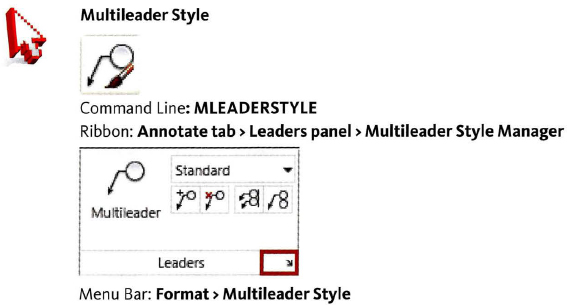
Multileader Style Manager
You use the Multileader Style Manager to manage and edit multileader styles. The dialog box and options work almost identically to the Dimension Style Manager. You use this dialog box to create, edit, delete, and set current multileader styles.
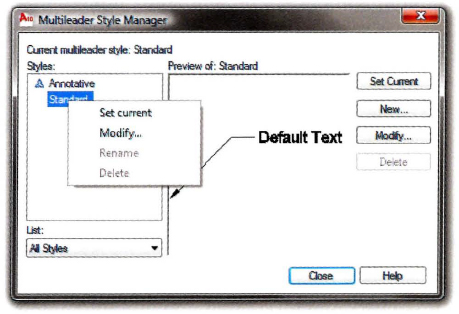
Modify Multileader Style
You use the Modify Multileader Style dialog box to edit the properties associated with the multileader style. Style properties are organized on three tabs with each tab containing specific types of properties. As soon as you exit the Multileader Style Manager, changes you made to an existing style are reflected automatically on any multileaders that are using the style.
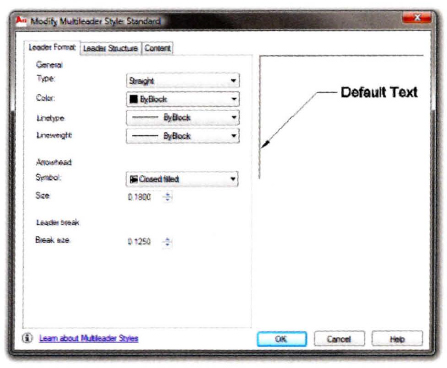
Multileader Content Types
You can specify three different content types for multileader objects. On the Content tab of the Modify Multileader Style dialog box, you can select from the following:
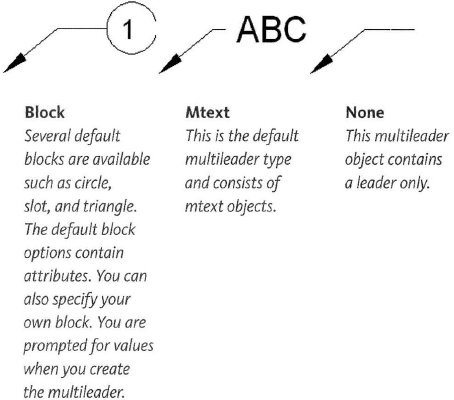
Using Multileaders
Using multileaders involves several tasks. These include creating and managing multileader styles, placing multileaders, adding leaders, and aligning and collecting multileaders.
With the exception of creating and managing multileader styles, which should generally be done first, there is no prescribed order for creating and editing multileaders or for using any of the multileader tools.
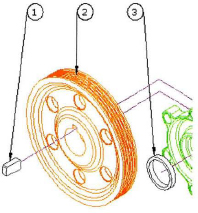
Multileaders Ribbon Panel
You use the Multileaders panel to access tools specific to creating and editing multileaders. The panel contains the standard buttons for accessing commands as well as a multileader style list that you use to set the active multileader style. You can also use the list to change the style of a selected multileader object.
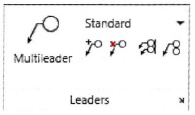
The following commands are found on the Leader panel in the Annotate tab.
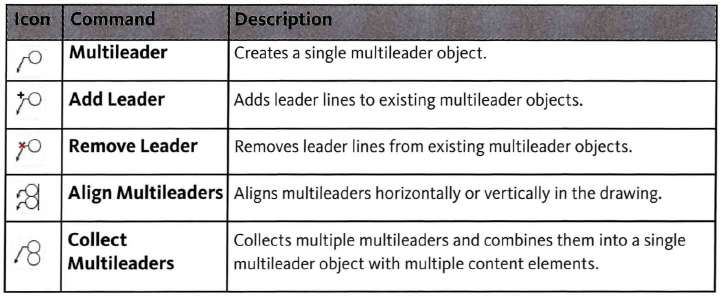
Process: Using Multileaders
The following steps describe the overall process for using multileaders.
- Determine the multileader style you want to use: Depending on your needs, you may need to create a new style or edit an existing one. The product provides two default styles. You can use them as is, modify them, or create new ones.
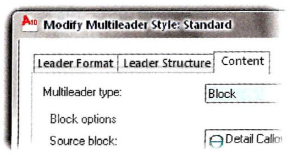
- Use the Mleader command to create multileaders.
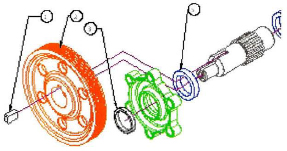
- Use the Add Leader or Remove Leader tools to modify existing multileaders.
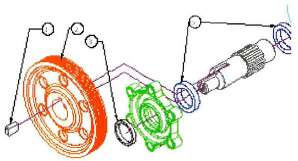
- Use the Align Multileaders and Collect Multileader tools to further modify the appearance of multileaders on the drawing.
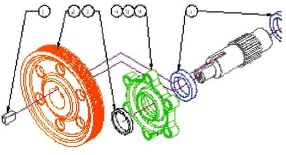
Guidelines
- Use Annotative scaling or the Annotative style for your multileader. This makes the multileaders in drawings that have multiple views the same size.
- You do not need a style for small or individual changes to a multileader. You can use the Properties palette to change individual properties for selected multileader objects.
- After you have placed a multileader, you can adjust its location using grips.
Using Dimension Break
You can use the Dimbreak command to break multileader objects at intersections of objects or dimensions in the drawing..


